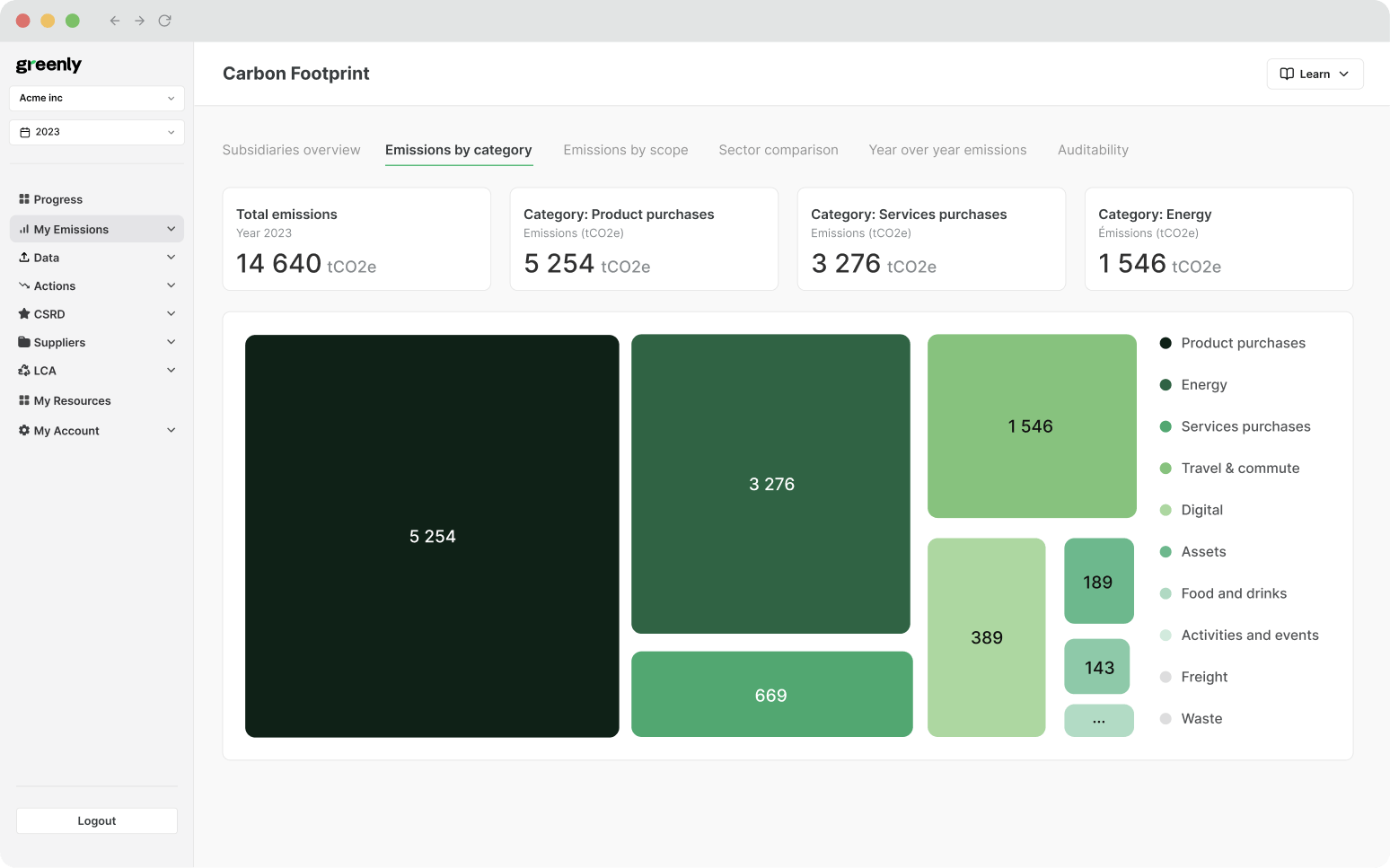
Sustainable Development Goals (SDGs): All You Need to Know
The United Nations has defined 17 goals, aimed at creating a better world. What are these so-called "Sustainable Development Goals" ? Explanations.
ESG / CSR
Industries
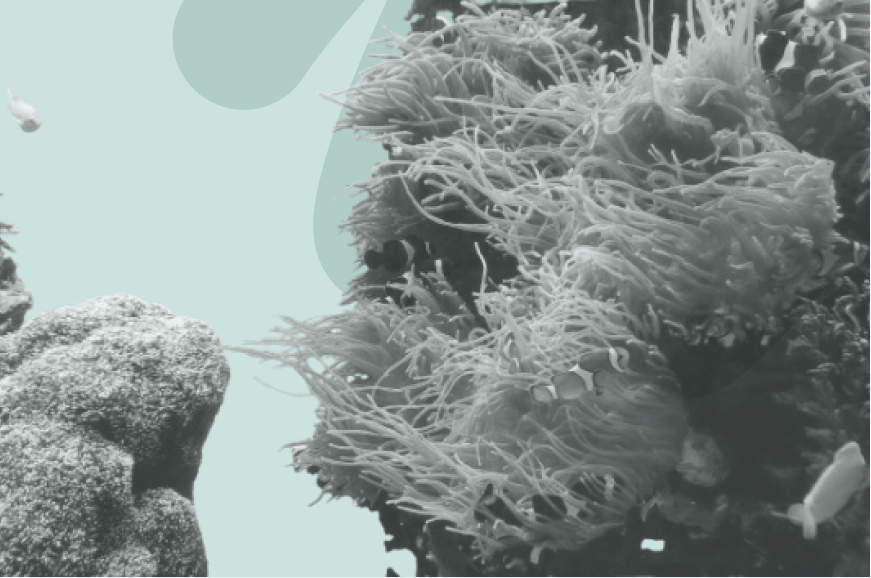


If you’ve ever ventured to visit coral reefs or look up information about them, you may have come to learn some alarming facts – such as that the Great Barrier Reef is dying, or that tourism in areas which offer scuba diving or snorkeling to visit coral reefs are likely to suffer.
However, coral reefs aren’t just an enjoyable water-activity or to sight-see when traveling – but remain essential to our oceans, ecosystems and keeping our economies above water in good shape.
According to the Coral Reef Alliance, coral reefs support around 25% of all marine species despite covering less than 1% of the ocean floor, making coral reef ecosystems some of the the most biodiverse ecosystems on Earth.
Reef building corals and coral reef diversity are valuable, bringing in over $36 billion annually to the global economy through tourism, fisheries, and coastal protection – making it important to maintain and protect healthy coral reefs.
In this article, we’ll explain everything you need to know about coral reefs – including why coral reefs are important, what is currently happening with coral reefs, and what we can do to protect coral reefs moving forward.
Coral reefs refer to the large, underwater species made up of the skeletons from colonial marine invertebrates – more commonly known as sponges, corals, and specific kinds of anemones. As a result of their hermatypic nature, coral reefs are rough to the touch seeing as they develop a strong exoskeleton as a defense mechanism for their soft incides.
Unbeknownst to most people, coral reefs are not plants – but animals living underwater just like turtles, fish, and jellyfish.
Coral reefs are formed through a multifaceted biological process that can take up to 10,000 years.
The foundation of reef structure begins with tiny coral polyps, which are marine animals closely related to sea anemones. Coral polyps are the organisms which take charge in building coral reefs. No matter how big, small, colorful, or soft coral reefs are – these “rainforests of the sea” help to support thousands of species under the ocean.
These polyps secrete calcium carbonate to create hard, limestone skeletons that serve as the building blocks for entire reef systems. Coral growth is enchanced via a symbiotic relationship with microscopic algae called zooxanthellae, which live within coral tissues and provide up to 90% of the coral's energy through photosynthesis.
According to research from the Marine Biology & Sustainability Learning Center, this relationship allows coral reefs to thrive in nutrient-poor tropical waters where other diverse ecosystems would struggle. As generations of coral polyps live and die, their coral skeletons are eventually infused together – creating the complex three-dimensional reef structure that provides habitat for countless marine species, including sea urchins, fish, and other invertebrates on the ocean floor.
The National Ocean Service explains how there are three main types of coral reefs: fringing, barrier, and atoll.
Here's a breakdown of the three different types of coral reefs:
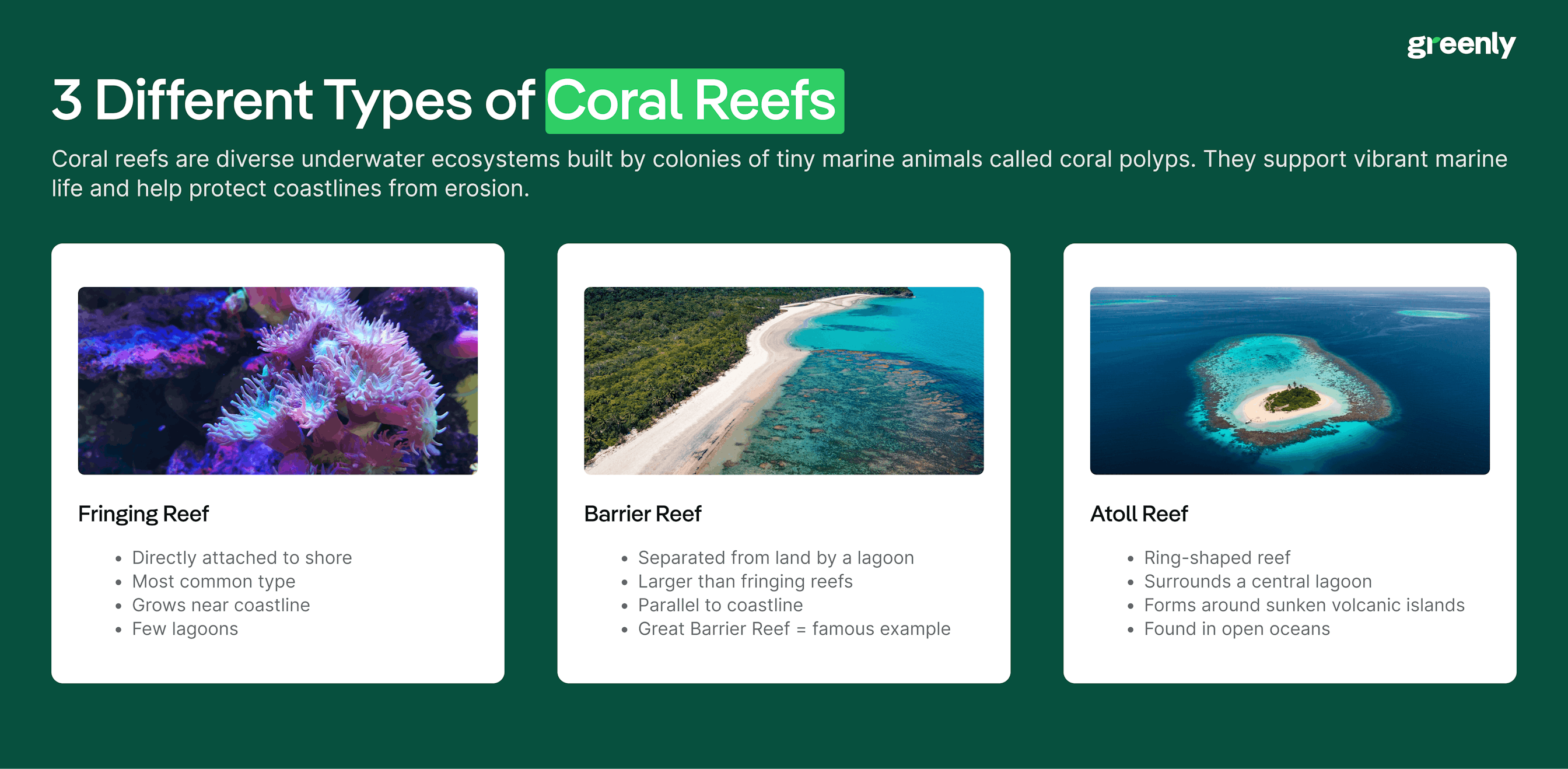

Most coral reefs that people are familiar with are built by stony corals (scleractinian corals), which form the foundation of tropical reefs in shallow, sunlit waters of the Pacific Ocean, Atlantic Ocean, and Indian Ocean. These hard corals create the massive limestone structures that support vibrant coral colony communities bursting with colorful sea life – of which attracts tourists from around the world.
On the other hand, deep seal corals are not known to be as visually appealing, but are more scientifically intriguing. According to National Oceanic and Atmospheric's Deep Sea Coral Research and Technology Program, deep sea corals represent a completely different ecosystem, thriving in cold, dark waters at depths ranging from 50 to over 6,000 meters without relying on sunlight or symbiotic algae.
Unlike their shallow-water counterparts, stony coral colonies, deep sea corals are primarily soft corals and black corals that filter-feed on plankton and organic matter.
The battle cards below will demonstrate the differences between stony corals and deep sea corals:
Coral reefs can be found all over the world, but are commonly found in warm, tropical climates and in more shallow waters – such as in the Caribbean, Florida, or off the coasts of Australia. Coral reefs are found in these regions near the equator seeing as they need year-round sunlight to sustain themselves.
This includes the most well-known coral reef of all time: which is the Great Barrier Reef found off the coast of Cairns in Queensland, Australia.
Did you know? The Great Barrier Reef in Australia is over 1,500 miles (or 2,400 kilometers) long, and is also home to more than 9,000 species. In fact, the Great Barrier Reef is so massive – you would be able to see it from outer space!
Here are some facts about coral reefs you may not have known before:
Ultimately, coral reefs aren’t just visually appealing to look at – but have been on our Earth for millions of years before us and have proven vital to ocean ecosystems and even modernized human life.
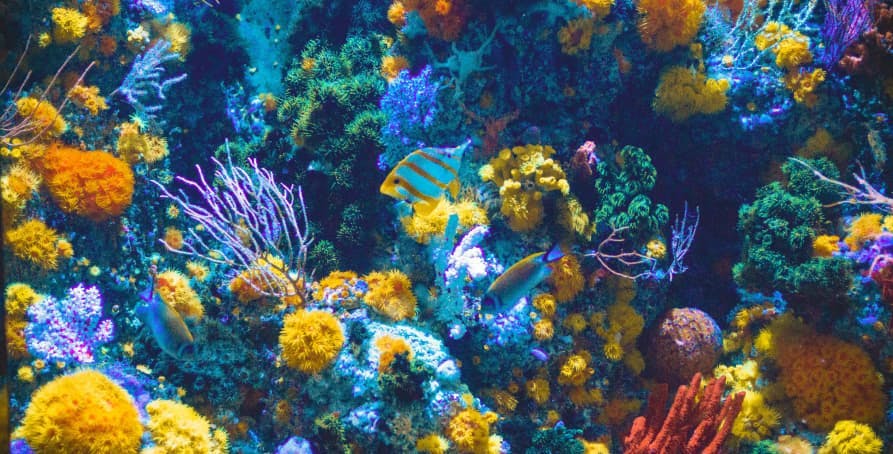
Coral reefs are important because they provide homes for over 25% of all marine life and serve as a vital asset to oceanic ecosystems. This means without coral reefs, large areas of sand, ocean currents, and deep or shallow areas of water would fail to be created in the first place.
Think of Marlin and Nemo in the famous Disney Pixar film – without coral reefs, copious amounts of marine life would be homeless and would ultimately throw off the rest of the marine ecosystem and food chain.
Much of why coral reefs are pivotal is a result of cause-and-effect. For instance, if coral reefs begin to die, then they won’t be able to absorb as much wave energy – which would mean more damage would occur after a tsunami.
Additional reasons why coral reefs are important include:
The flip cards below will depict how tourism, fishing, and medical research would be negatively impacted if coral species were to go extinct:
Overall, coral reefs are more a part of our everyday lives than the majority of us realize – and we would undoubtedly feel the effects if coral reefs are to succumb to the negative impacts of climate change.
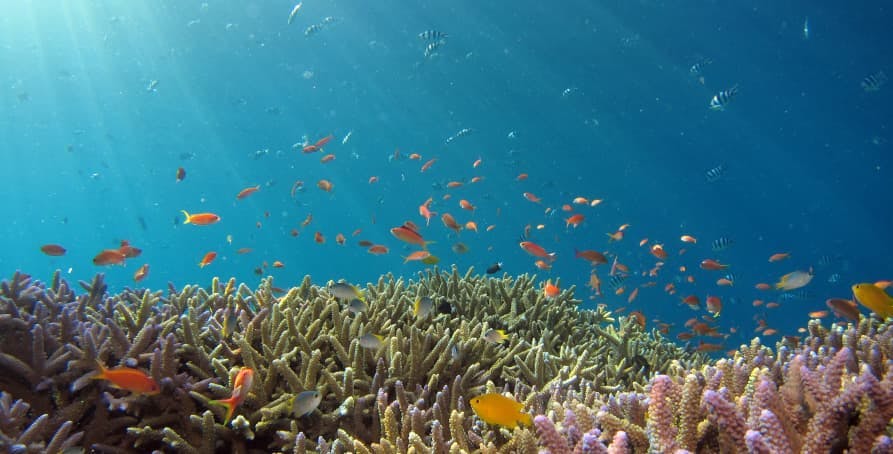
Coral bleaching refers to when coral reefs turn white, or appear “bleached” due to stressful circumstances such as changes in sunlight, temperature, and the availability of resources nearby – many of which are dying out due to climate change itself.
Algae and coral reefs depend on one another for survival. However, when coral reefs become stressed, algae will detach itself from the coral reel – which leaves the coral more susceptible to coral bleaching.
The most common causes of coral bleaching include:
It is important to remember that coral reefs are crucial to ocean life and marine ecosystems, and if coral bleaching is to continue – everyone below and above the ocean will feel the effects, seeing as tourism, fishing, and even food supply is likely to take a hit.

In addition to coral bleaching, ocean acidification can severely compromise coral growth and the structural integrity of entire reef systems.
According to PNAS, ocean acidification, which is caused by the absorption of excess atmospheric CO₂, reduces the availability of carbonate ions that corals need to build their calcium carbonate skeletons. This could could ultimately have an impact on reef growth and the process by which corals grow and form reefs.
Therefore, ocean acidification is a serious threat to coral reefs alongside rising water temperatures – in addition to having a profound impact on marine life, as it could alter marine food chains and ultimately our own food supply.
Ocean acidification is caused by:
The drop down sections below will explain how each of these activities contributes to ocean acidification:
Factories release large volumes of carbon dioxide and other pollutants into the atmosphere, which can dissolve into oceans and lower their pH.
Transportation, heating, and electricity use release excess CO₂, which is absorbed by oceans, leading to increased acidity in marine environments.
Trees help absorb CO₂. Cutting them down decreases this natural filter, increasing atmospheric CO₂ that eventually gets absorbed by oceans.
Overfishing disrupts ecosystems and removes species that help maintain ocean balance, making marine environments more vulnerable to acidification.
Rising global temperatures and greenhouse gases increase CO₂ in the atmosphere, accelerating its absorption by oceans and increasing acidification.
Managing your industrial emissions and environmental impact to preserve coral reefs and protect the planet can be challenging, but companies like Greenly are here to help your business succeed as industries worldwide push for greater sustainability.
In order to stop coral bleaching and protect coral reefs moving forward, we all need to be more mindful of our day-to-day actions and how they contribute to global warming – as coral reefs will require more stable, global temperatures to survive.
The good news about coral bleaching and global warming is that coral reefs aren’t entirely helpless in the fight against climate change.
Coral reefs, such as the ones in the Great Barrier Reef, are self-healing and are often able to recover from damage by themselves – but this doesn’t mean that they are no longer under the threat of climate change or that we should stop making an effort to protect coral reefs.
If the world is to reach 1.5°C in the midst of global warming, the Intergovernmental Panel on Climate Change has claimed that up to 90% of coral reefs around the world will die off. Therefore, mankind can certainly play a role in mitigating this desolate and currently inevitable fate for coral reefs.
Here are some things that can be done to help prevent coral bleaching and protect coral reefs:
Ultimately, coral reefs are not only essential to ocean life – but for all of us living above the water. It’s possible for us to take action to protect coral reefs from coral bleaching, but we need to take action now in order to preserve this extraordinary facet of marine life that has somehow survived all of this time on Earth.
This time, coral reefs need a little help making it through – and we have the power to do so.
If reading this article coral reefs has made you interested in reducing your carbon emissions to further fight against climate change – Greenly can help you!
Seeking to understand how coral reefs could have an impact on the ocean and subsequent economic activities which may relate to your business, but don’t worry – Greenly is here to help! Click here to book a demo and get personalized expertise on how you can start to reduce your own emissions and decrease your environmental impact.
Greenly can help you make an environmental change for the better, starting with a carbon footprint assessment to know how much carbon emissions your company produces.
